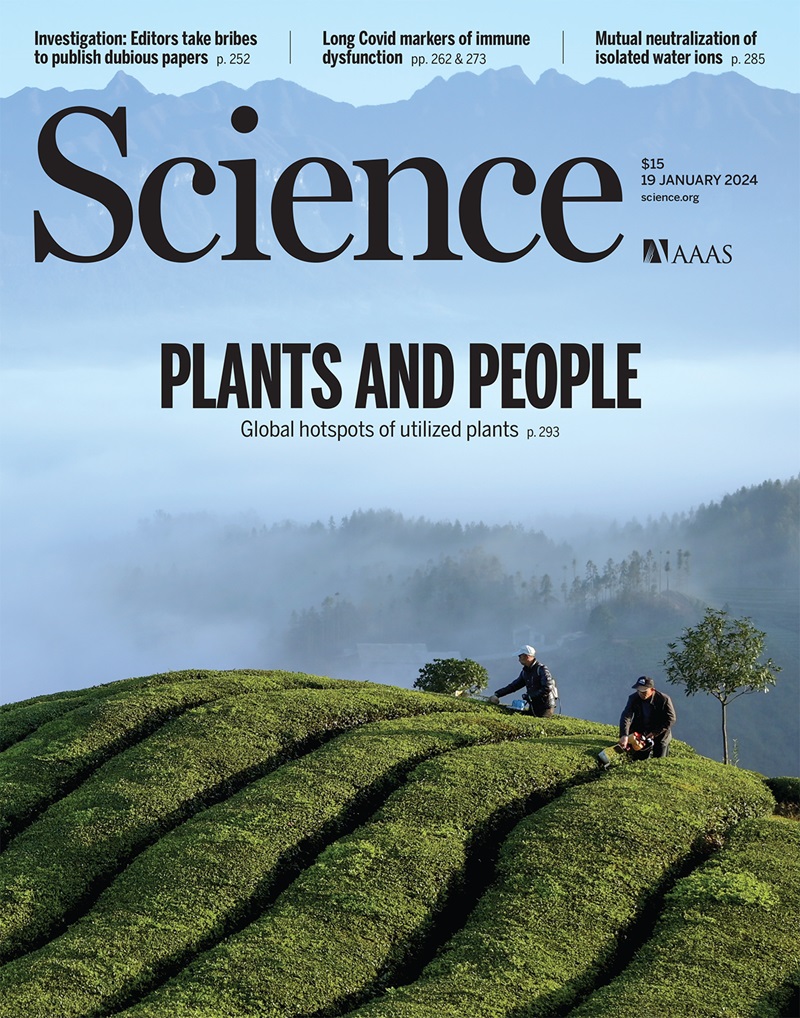尿素在水滴中由二氧化碳和氨自发形成
IF 44.7
1区 综合性期刊
Q1 MULTIDISCIPLINARY SCIENCES
引用次数: 0
摘要
尿素是寻找生命起源的关键分子,也是工业大量生产的基本化学物质。氨和二氧化碳的形成需要高压和高温,或者在较温和的条件下,需要催化剂或额外的试剂。在这项研究中,我们观察了在环境条件下,氨和二氧化碳在水滴的表层自发形成尿素。用拉曼带作为标记探测单个光学捕获液滴。我们发现表层就像一个微观流动反应器,化学梯度提供了非常规反应途径。这一观察揭示了独特液滴化学的一般机制方案。界面化学是益生元条件下尿素生成的一种可能的非能量途径。本文章由计算机程序翻译,如有差异,请以英文原文为准。
Spontaneous formation of urea from carbon dioxide and ammonia in aqueous droplets
Urea is a key molecule in the search for the origin of life and a basic chemical produced in large quantities by industry. Its formation from ammonia and carbon dioxide requires either high pressures and temperatures or, under milder conditions, catalysts or additional reagents. In this study, we observed the spontaneous formation of urea under ambient conditions from ammonia and carbon dioxide in the surface layer of aqueous droplets. Single, optically trapped droplets were probed by using Raman bands as markers. We found the surface layer to act like a microscopic flow reactor, with chemical gradients providing access to unconventional reaction pathways. This observation revealed a general mechanistic scheme for distinctive droplet chemistry. Interfacial chemistry is a possible nonenergetic route for urea formation under prebiotic conditions.
求助全文
通过发布文献求助,成功后即可免费获取论文全文。
去求助
来源期刊

Science
综合性期刊-综合性期刊
CiteScore
61.10
自引率
0.90%
发文量
0
审稿时长
2.1 months
期刊介绍:
Science is a leading outlet for scientific news, commentary, and cutting-edge research. Through its print and online incarnations, Science reaches an estimated worldwide readership of more than one million. Science’s authorship is global too, and its articles consistently rank among the world's most cited research.
Science serves as a forum for discussion of important issues related to the advancement of science by publishing material on which a consensus has been reached as well as including the presentation of minority or conflicting points of view. Accordingly, all articles published in Science—including editorials, news and comment, and book reviews—are signed and reflect the individual views of the authors and not official points of view adopted by AAAS or the institutions with which the authors are affiliated.
Science seeks to publish those papers that are most influential in their fields or across fields and that will significantly advance scientific understanding. Selected papers should present novel and broadly important data, syntheses, or concepts. They should merit recognition by the wider scientific community and general public provided by publication in Science, beyond that provided by specialty journals. Science welcomes submissions from all fields of science and from any source. The editors are committed to the prompt evaluation and publication of submitted papers while upholding high standards that support reproducibility of published research. Science is published weekly; selected papers are published online ahead of print.
 求助内容:
求助内容: 应助结果提醒方式:
应助结果提醒方式:


